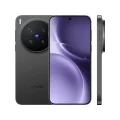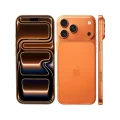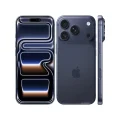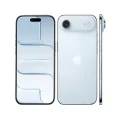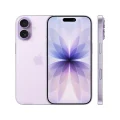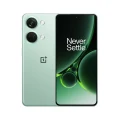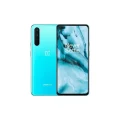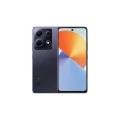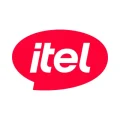- Home
- All Products
- Google Pixel
- Google Pixel 6
Google Pixel 6
-
Battery: Li-Ion 4614 mAh
-
RAM: 8GB, 8GB
-
Storage: 128GB, 256GB
-
Display: AMOLED, 6.4 inches
-
Camera: Rear 50 MP + 12 MP, and Front 8 MP
-
OS: Android 12, upgradable to Android 14
Full Specifications
Price
| Unofficial | [8/128GB] US -44,499 BDT |
General
| Model | Google Pixel 6 |
| Announced | 2021, October 19 |
| Released | 2021, October 28 |
| Status | Available |
| Price | 41999 BDT |
Design
| Dimensions | 158.6 x 74.8 x 8.9 mm (6.24 x 2.94 x 0.35 in) |
| Weight | 207 g (7.30 oz) |
| SIM SIM (Subscriber Identity Module) is a small card that contains mobile network subscriber's account information. This allows the phone using the card to attach to a mobile network. The SIM card is most commonly associated with GSM and UMTS mobile networks. Moving a SIM card from one phone to another allows a subscriber to switch mobile phones without having to contact their mobile network carrier. SIM cards can also be used by a phone to store limited amounts of data, such as phone numbers and text messages. |
Nano-SIM and eSIM IP68 dust/water resistant (up to 1.5m for 30 min) |
| Colors |
Sorta Seafoam, Kinda Coral, Stormy Black |
Display Specification
| Display Type Display Technology => A number of display technologies and types used in mobile phones => TFT (Thin Film Transistor), IPS (In-Place Switching), OLED (Organic Light Emitting Diode), AMOLED (Active-Matrix Organic Light-Emitting Diode), Super AMOLED (an even advanced version of AMOLED), Resistive Touchscreen (Resistive touchscreens contain two layer of conductive material with a very small gap between them which acts as a resistance), Capacitive Touchsceen (Capacitive touchscreen technology consists of a layer of glass coated with a transparent conductor) | AMOLED, HDR10+ |
| Size | 6.4 inches, 98.9 cm2 |
| Resolution | 1080 x 2400 pixels, 20:9 ratio |
| Refresh Rate | 90Hz |
| Pixel Density Pixel Density (PPI) is refers to the concentration of pixels on a particular display, measured in pixels per inch (ppi). Pixel density is calculated by dividing the diagonal pixel resolution of a display by its diagonal size, higher pixel density better display quality. | 411 ppi density |
| Display Protection Display Protection => Gorilla Glass is a special alkali-aluminosilicate glass shield with exceptional damage resistance that helps protect mobile displays from scratches, drops, and bumps of everyday use, It is always better to go for a smartphone with Gorilla Glass for that added protection and peace of mind. | Corning Gorilla Glass Victus |
| Features | 83.4% screen-to-body ratio |
Platform
| Operating System OS => Every computer system run on a base software called Operating System (OS). Operating System controls all basic operations of the computer (such as smartphone, PDAs, tablet computers and other handheld devices). The Operating System allows the user to install and run third party applications (apps), apps are used to add new functionality to the device. | Android 12, upgradable to Android 14 |
| Chipset Chipset is a group of integrated circuits designed to perform one or a more dedicated functions, often with real time computing constraints, Popular smartphones are equipped with more advanced embedded chipsets that can do many different tasks depending on their programming. | Google Tensor (5 nm) |
| CPU CPU (Central Processing Unit) mostly known as processors, CPU processes instructions in order to carry out certain functions that make your device operate properly. Processors are often described as the brain of computers, smartphones and tablets, Smartphones and tablets rely on processors to carry out their every task, Processors are an incredibly important factor in selecting any type of computing device, including your smartphone. | Octa-core (2x2.80 GHz Cortex-X1 & 2x2.25 GHz Cortex-A76 & 4x1.80 GHz Cortex-A55) |
| GPU GPU (Graphics Processing Unit) is a single-chip processor designed to rapidly manipulate and alter memory to accelerate the creation of images in a frame buffer intended for output to a display, This includes things such as lighting effects, object transformations, and 3D motion. | Mali-G78 MP20 |
Main Camera
| Camera Setup | Dual |
| Resolution |
50 MP, f/1.9, 25mm (wide), 1/1.31", 1.2µm, Dual Pixel PDAF, Laser AF, OIS 12 MP, f/2.2, 17mm, 114˚ (ultrawide), 1.25µm |
| Features |
Dual-LED flash, Pixel Shift, Auto-HDR, panorama |
| Video | 4K@30/60fps, 1080p@30/60/120/240fps; gyro-EIS, OIS |
Selfie Camera
| Camera Setup | Single |
| Resolution |
8 MP, f/2.0, 24mm (wide), 1.12µm |
| Video | 1080p@30fps |
| Features |
Auto-HDR, panorama |
Network & Connectivity
| Technology | GSM / CDMA / HSPA / EVDO / LTE / 5G |
| Speed | HSPA, LTE-A (CA), 5G |
| Wi-fi Wi-Fi is a popular wireless networking technology using radio waves to provide high-speed network connections that allows devices to communicate without cords or cables, Wi-Fi is increasingly becoming the preferred mode of internet connectivity all over the world. | Wi-Fi 802.11 a/b/g/n/ac/6e, dual-band, Wi-Fi Direct |
| Bluetooth Bluetooth is a wireless communications technology for exchanging data between mobile phones, headsets, computers and other network devices over short distances without wires, Bluetooth technology was primarily designed to support simple wireless networking of personal consumer devices. | 5.2, A2DP, LE, aptX HD |
| NFC NFC (Near field communication) is a set of standards for smartphones and similar devices to establish peer-to-peer radio communications with each other by touching them together or bringing them into proximity, usually no more than a few inches. | Yes |
| Positioning |
GPS (L1+L5), GLONASS (G1), BDS (B1I+B1c+B2a), GALILEO (E1+E5a), QZSS (L1+L5) |
| FM Radio | No |
| USB | USB Type-C 3.1 |
| 2G Network |
GSM 850 / 900 / 1800 / 1900 CDMA 800 / 1700 / 1900 |
| 3G Network |
HSDPA 800 / 850 / 900 / 1700(AWS) / 1900 / 2100 CDMA2000 1xEV-DO |
| 4G Network |
1, 2, 3, 4, 5, 7, 8, 12, 13, 14, 17, 18, 19, 20, 25, 26, 28, 29, 30, 32, 38, 39, 40, 41, 42, 46, 48, 66, 71 - GB7N6, G9S9B16 |
| 5G Network |
1, 2, 3, 5, 7, 8, 12, 14, 20, 25, 28, 30, 38, 40, 41, 48, 66, 71, 77, 78, 257, 258, 260, 261 SA/NSA/Sub6/mmWave - G9S9B 1, 2, 3, 5, 7, 8, 12, 14, 20, 25, 28, 30, 38, 40, 41, 48, 66, 71, 77, 78 SA/NSA/Sub6 - GB7N6 |
Battery
| Battery Type Battery Type => Cell phones run on various kinds of batteries depending on the manufacturer, phone size or shape and features. There are basically four types of cell phone batteries => Lithium Polymer, Lithium Ion, Nickel Metal Hydride and Nickel Cadmium. | Li-Ion (Lithium Ion) |
| Capacity Battery Capacity is a measure (typically in Amp-hr) of the charge stored by the battery, and is determined by the mass of active material contained in the battery. The battery capacity represents the maximum amount of energy that can be extracted from the battery under certain conditions. | 4614 mAh |
| Removable | No |
| Charging |
Wired (based on 30W charger), PD3.0, 50% in 30 min (advertised) 21W wireless |
| Wireless Charging Wireless Charging (Inductive Charging) uses an electromagnetic field to transfer energy between two objects. This is usually done with a charging station. Energy is sent through an inductive coupling to an electrical device, which can then use that energy to charge batteries or run the device. | Yes |
Multimedia
| Loudspeaker | Yes, with stereo speakers |
| Audio Jack | No |
Storage
| Card Slot Memory Card Slot is a special slot for inserting a memory card. Memory cards allow you to expand the phone's built-in memory, A memory card (sometimes called a flash memory card or a storage card) is a small storage medium used to store data such as text, pictures, audio, and video, for use on small, portable or remote computing devices such as mobile phones, mp3 players, digital cameras. | No |
| Internal Storage Internal Storage is a data storage space (flash memory) mostly used in smartphones, tablets and other electronic devices where operating system, apps, music, photos, videos, files and other user data Is stored. |
128GB 8GB RAM, 256GB 8GB RAM UFS 3.1 |
Sensors
| Fingerprint | Yes (under display, optical) |
| Other Sensors | accelerometer, gyro, proximity, compass, barometer |
About the Google Pixel 6
The Google Pixel 6 marked a pivotal moment in Google’s smartphone strategy when it launched in October 2021, representing the company’s bold departure from relying on Qualcomm processors to developing its own custom silicon. The device introduced Google’s first-generation Tensor chip, which was conceptualized in 2016 and designed to run state-of-the-art breakthroughs from teams like Google DeepMind. This custom processor fundamentally changed how Google approached smartphone design, allowing it to optimize hardware specifically for its AI and machine learning capabilities rather than adapting software to work with off-the-shelf components.
The hardware specifications positioned the Pixel 6 as a compelling alternative to flagship devices. The device featured a 6.4-inch OLED display with a 90Hz refresh rate, delivering smooth scrolling and responsive touch interactions. The camera system became the phone’s standout feature, with a completely redesigned camera bar housing a 50MP main sensor and 12MP ultrawide lens that leveraged the Tensor chip’s AI capabilities for features like Magic Eraser, Face Unblur, and enhanced Night Sight performance. Google equipped the phone with 8GB of RAM and offered storage options of 128GB or 256GB, while a robust 4614 mAh battery supported all-day usage.
Main Key Features
- Display: 6.4-inch FHD+ OLED, 90 Hz refresh rate, HDR10+, 411 ppi resolution, Gorilla Glass Victus protection
- Processor & Memory: Google Tensor (5 nm), 8 GB RAM, options for 128 GB or 256 GB storage
- Cameras: Rear: 50 MP wide (with OIS), 12 MP ultrawide; capable of 4K video at 60 fps. Front: 8 MP selfie camera
- Battery & Charging: 4,614 mAh battery with 30 W wired and 21 W wireless charging
- Build & Extras: Gorilla Glass Victus back, IP68 water/dust resistance, stereo speakers, under-display fingerprint sensor, NFC, Wi-Fi 6E, Bluetooth 5.2
- Software: Ships with Android 12; Google has pledged extended support—now receiving updates up to Android 17, thanks to an updated policy.
Pros & Cons
Pros
- Unique Design: Bold, premium look with high-quality build
- Tensor-Powered Feature Set: Great AI tools like Magic Eraser, Live Translate, and more
- Exceptional Camera: 50 MP sensor delivers sharp, HDR-rich, and low-light optimized photos
- Long Software Support: Extended to five years, including major OS upgrades and security patches
- Competitive Value (2025): Strong features for a reduced price compared to current flagships
Cons
- 90 Hz Display Only: Lacks the smoother 120 Hz refresh found on newer flagships
- Thermal Throttling: The Tensor chip may heat up and slow down under sustained load
- Charging Speed: 30 W wired charging is relatively modest by modern standards
- Potential Hardware Glitches: Some users report heating, poor modem reception, or dead-boot issues
Why Choose this Phone?
Choose the Pixel 6 if you value camera quality, AI-enhanced features, clean stock Android, and long-term software support—all wrapped in a stylish design. It’s one of the most compelling older flagships in 2025, especially given the extended update policy that keeps it future-proof for years to come
Opinion
The Pixel 6 stands out as a rare phone that continues to feel modern long after launch. Its Tensor chip, while not the fastest on benchmarks, delivers a truly useful AI-first experience. The camera remains competitive, and the extended support means you won’t feel abandoned. Its minor shortcomings—like screen refresh rate and thermal quirks—are easy compromises when balanced against its value, elegance, and Google-first experience. For many, it still hits the sweet spot in 2025.
See Another Model:
FAQs about Google Pixel 6
Q: Is it still worth buying in 2025?
A: Yes—especially refurbished or discounted units offer flagship-level performance and software longevity at a reduced cost.
Q: How long will it get updates?
A: Google extended support to five years, meaning the Pixel 6 will receive OS and security updates through Android 17. Android 16 is already available, and Android 17 is confirmed.
Q: How is the camera performance?
A: Still excellent—with its 50 MP sensor and Google’s computational algorithms delivering strong results in daylight, low light, portraits, and video.
Q: Are there any overheating issues?
A: Some users have reported overheating during heavy use or gaming, and occasional hardware glitches. However, many users experience stable performance, especially with light or moderate use.
Q: Does it support wireless charging?
A: Yes—it supports 21 W wireless charging (in addition to 30 W wired).
Q: How does the display hold up?
A: The 90 Hz OLED display delivers vibrant colors, HDR10+, and strong brightness, although it doesn’t match the ultra-smoothness of newer 120 Hz screens.
Give Your Review
Disclaimer Note
You can write your own disclaimer from APS Settings -> General -> Disclaimer Note.
